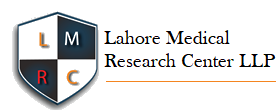A Biosorption study of Lead by Aspergillus Fumigatus
Biosorption study of Lead by Aspergillus Fumigatus
DOI:
https://doi.org/10.54393/mjz.v1i1.2Abstract
Heavy metals liberated by various industrial and agricultural processes are the major pollutants in soil, agricultural, marine, and industrial and even treated waste waters. Lead is greatly used in many industrial applications such as a storage battery manufacturing, printing, fuels, photographic materials, pigments and explosive manufacturing Objective: To assess the ability of Aspergillus fumigatus for removal of metal contamination such as lead by biosorptionMethods: The pure culture of the Aspergillus fumigatus was used for biosorption. The initial samples were cultured on the bread as the fungal spores were given suitable environmental conditions i.e., temperature, moisture, pH etc. For obtaining the pure culture of the Aspergillus fumigatus culture media was prepared. The spores collected were then allowed to grow on a specific culture media in a sterile Petri plates under aseptic conditions. Inoculation will be carried out by using 20 loops of fungal spores spread on the culture medium. After inoculation these plates were incubated at 28°C for few days and the colonies of the fungal strain becomes visible after 48 hours. The prepared agar is poured in the sterilized Petri plates were allowed to cool and solidify. As a result of this centrifugation, the spores and agar were separated. After 12 days of incubation, one fourth portion of the agar plate was cut and placed into the falcon tubes containing 10 ml distilled water Results: The results revealed that the biosorption recovery rate is maximum at 120 mg\g of dry mass i.e. 3.4%. The above estimation shows that the percentage of biosorption is directly proportional to the biomass concentration.
References
Abdallah R and Taha S. Biosorption of methylene blue from aqueous solution by nonviable Aspergillus fumigatus. Chemical Engineering Journal, 2012, 195: p. 69-76.doi.org/10.1016/j.cej.2012.04.066
Al-Garni S, Ghanem K and Bahobail A. Biosorption characteristics of Aspergillus fumigatus in removal of cadmium from an aqueous solution. African Journal of Biotechnology, 2009. 8(17).https://www.ajol.info/index.php/ajb/article/view/62347
Abu Al-Rub FA, Kandah M and Al-Dabaybeh N. Competitive adsorption of nickel and cadmium on sheep manure wastes: experimental and prediction studies. Separation science and Technology, 2003. 38(2): 483-497.doi.org/10.1081/SS-120016586
Gaballah I and Kilbertus G. Recovery of heavy metal ions through decontamination of synthetic solutions and industrial effluents using modified barks. Journal of Geochemical Exploration, 1998. 62(1-3): 241-286.doi.org/10.1016/S0375-6742(97)00068-X
Kapoor A and Viraraghavan T. Biosorption of heavy metals on Aspergillus niger: effect of pretreatment. Bioresource technology, 1998, 63(2): 109-113.doi.org/10.1016/S0960-8524(97)00118-1
Lu J et al. Biocrude production and heavy metal migration during hydrothermal liquefaction of swine manure. Process Safety and Environmental Protection, 2018. 115: 108-115.doi.org/10.1016/j.psep.2017.11.001
Iskandar NL, Zainudin NAIM and Tan SG. Tolerance and biosorption of copper (Cu) and lead (Pb) by filamentous fungi isolated from a freshwater ecosystem. Journal of Environmental Sciences, 2011, 23(5): 824-830.doi.org/10.1016/S1001-0742(10)60475-5
Tech. ET Determination of some heavy metals in wastewater and sediment of artisanal gold local mining site of Abare Area in Nigeria. J. Environ. Treat. Tech, 2013. 1: 174-182.
Masindi V and Muedi KL. Environmental contamination by heavy metals. Heavy metals, 2018. 10: 115-132. doi: 10.5772/intechopen.76082
Lian J. Defective Graphene as a promising lead pollution absorbent from first-principles study. in 2020 5th International Conference on Mechanical, Control and Computer Engineering (ICMCCE). 2020. IEEE.doi: 10.1109/icmcce51767.2020.00101
Kahkha MRR, Piri J and Kaykhaii M. Application of Response Surface Modeling and Central Composition Design for Removal of Lead from Aqueous Solution Using Prosopis Stephanian Fruits. International Research Journal of Applied and Basic Sciences, 2014. 8(6): 701-706.
Shahid A and Maryam B. A new economic dimension to the environmental Kuznets curve: Estimation of environmental efficiency in case of Pakistan. Asian Economic and Financial Review, 2014, 4(1): 68.
Imani S et al. Hg, Cd and Pb heavy metal bioremediation by Dunaliella alga. Journal of Medicinal Plants Research, 2011, 5(13): 2775-2780.
Zhang Y et al. Biosorption of lead from aqueous solution by using chemically treated Saccharomyces cerevisiae. Environmental Engineering & Management Journal (EEMJ), 2011, 10(6). doi: 10.30638/eemj.2011.097
Saini S et al. Biosorption as environmentally friendly technique for heavy metal removal from wastewater. Fresh water pollution dynamics and remediation, 2020: 167-181.doi: 10.1007/978-981- 13-8277-2_10
Chen Y and Wang J. Removal of radionuclide Sr2+ ions from aqueous solution using synthesized magnetic chitosan beads. Nuclear engineering and design, 2012. 242: 445-451.doi.org/10.1016/j.nucengdes.2011.10.059
Sar P and D'Souza SF. Biosorptive uranium uptake by a Pseudomonas strain: characterization and equilibrium studies. Journal of Chemical Technology & Biotechnology, 2001, 76(12): 1286-1294.doi.org/10.1002/jctb.517
Fan Y et al. Effective utilization of waste ash from MSW and coal co-combustion power plant—Zeolite synthesis. Journal of hazardous materials, 2008, 153(1-2): 382-388.doi.org/10.1016/j.jhazmat.2007.08.061
Akthar MN, Sastry KS and Mohan PM. Mechanism of metal ion biosorption by fungal biomass. Biometals, 1996. 9(1): 21-28.doi.org/10.1007/BF00188086
Kumar Ramasamy R, Congeevaram S and Thamaraiselvi K. Evaluation of isolated fungal strain from e-waste recycling facility for effective sorption of toxic heavy metal Pb (II) ions and fungal protein molecular characterization—a mycoremediation approach. Asian J. Exp. Biol. Sci, 2011, 2: 342-347.
Kiran I, Akar T and Tunali S. Biosorption of Pb (II) and Cu (II) from aqueous solutions by pretreated biomass of Neurospora crassa. Process Biochemistry, 2005, 40(11): 3550-3558.doi.org/10.1016/j.procbio.2005.03.051
Knox BP et al. Distinct innate immune phagocyte responses to Aspergillus fumigatus conidia and hyphae in zebrafish larvae. Eukaryotic cell, 2014, 13(10): 1266-1277. doi: 10.1128/EC.00080- 14
Faryal R et al. Biosorption of lead by indigenous fungal strains. Pakistan Journal of Botany, 2007, 39(2): 615.
Downloads
Published
How to Cite
Issue
Section
License
Copyright (c) 2020 MARKHOR (The Journal of Zoology)

This work is licensed under a Creative Commons Attribution 4.0 International License.
This is an open-access journal and all the published articles / items are distributed under the terms of the Creative Commons Attribution License, which permits unrestricted use, distribution, and reproduction in any medium, provided the original author and source are credited. For comments editor@markhorjournal.com











